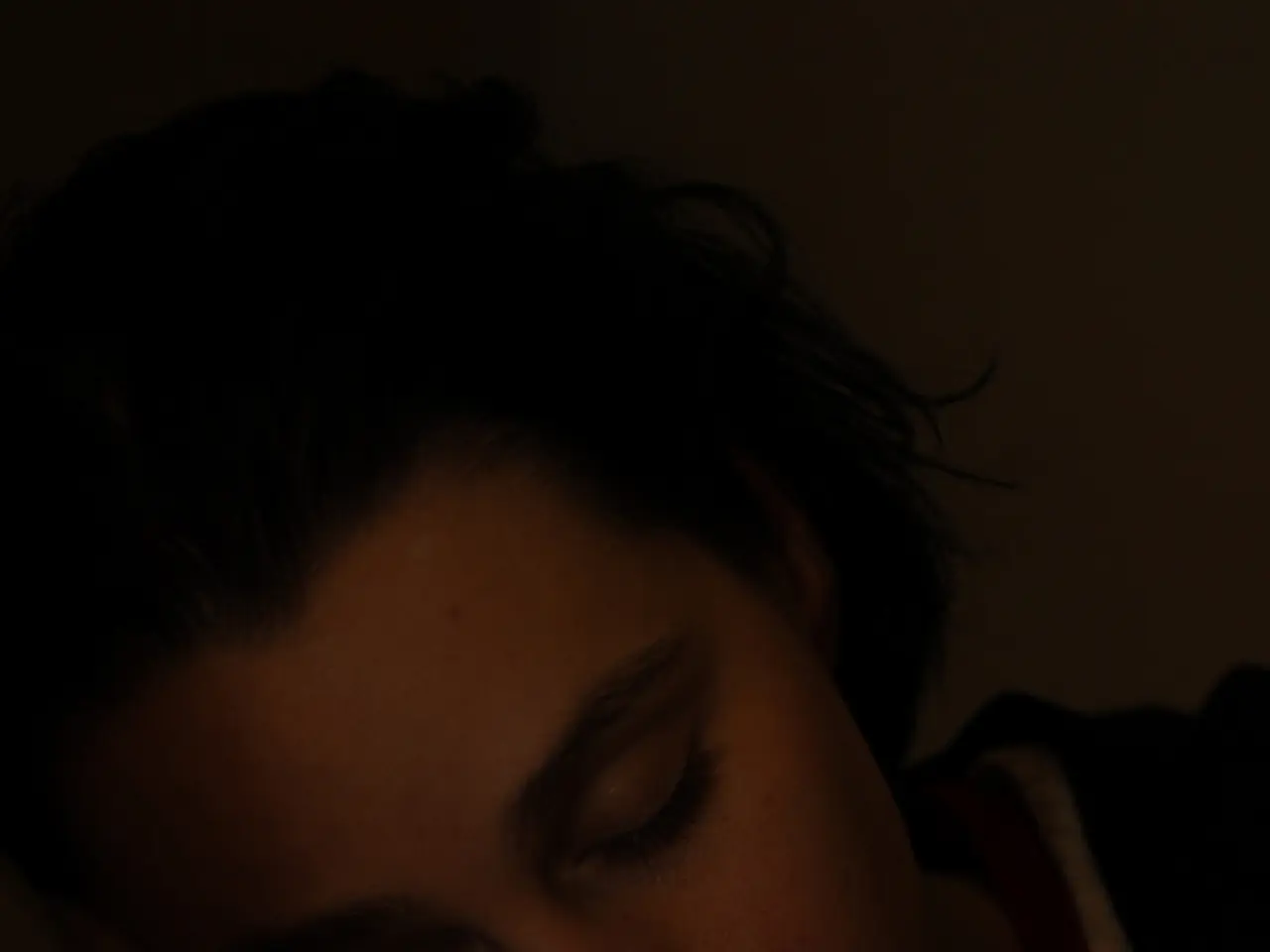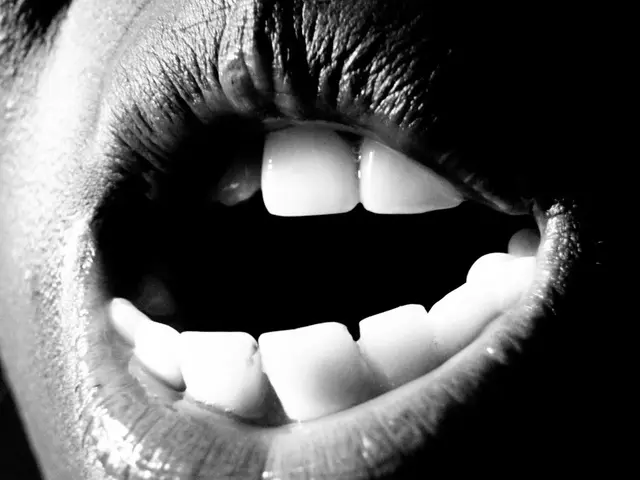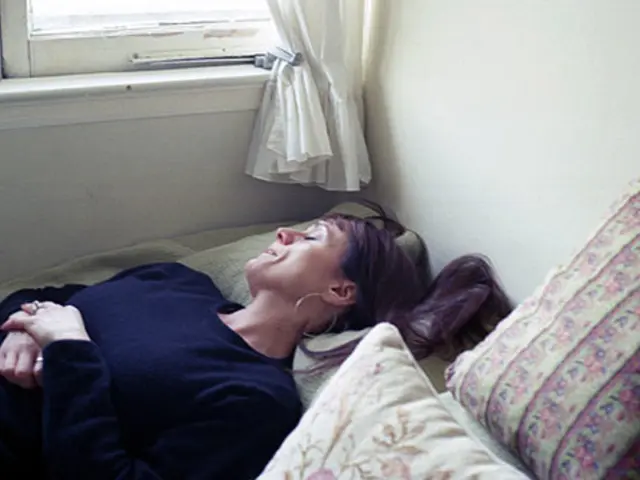Is Death's Equivalent Near Sleep? Investigating Similarities and Differences
The relationship between slumber and the end of life has fascinated humans since antiquity. From ancient mythology's personification of sleep and death as relatives to modern science's exploration of physiological processes, this connection sparked philosophical inquiry, creative interpretations, and scientific investigations.
We delve into the parallels and contrasts between sleep and death, examining their physiological, psychological, and metaphorical ties. By understanding these connections, we appreciate the roles these states play in human experiences.
The Mythical and Literary Connection
The bond between sleep and death is deeply rooted in human culture and storytelling. In ancient Greek mythology, Sleep and Death were twin brothers born to the goddess of night, Nyx, and the personification of darkness, Erebus. This familial link reflected the common understanding of sleep and death as states of immobility and escape from the woes of the conscious world.
In literature, sleep has often functioned as a metaphor for death. Shakespeare's Hamlet remarked upon death as an "undiscovered country," drawing a parallel with sleep. Such artistic interpretations invite us to ponder existential questions about life, impermanence, and the afterlife.
Physiological Imperatives
Though sleep and death may appear similar, their biological foundations exhibit fundamental differences.
Diminished Activity
Both sleep and death involve reduced physical activity. During sleep, the body relaxes, heart rate slows, and breath becomes more consistent. Upon death, the body stops all voluntary and involuntary activities, creating an impression of profound stillness. The primary disparity lies in the intent behind these states. Sleep is an active process, paving the way for cellular repair, memory consolidation, hormone regulation, and other vital functions. Death, on the other hand, marks the end of all biological activities and the decomposition of the body.
Altered Consciousness
Consciousness changes in both sleep and death. In sleep, cyclical brain patterns shift, with REM sleep stages featuring vivid dreams. Conversely, death represents a permanent cessation of consciousness, with no evidence of ongoing mental or sensory activity.
Brain Activity
A crucial distinction lies in the brain activity during these states. The brain remains active during sleep – particularly in REM sleep – with electrical patterns resembling wakefulness that support necessary functions like learning, memory consolidation, and emotional processing. Death, however, leads to the cessation of all electrical impulses, which signals the irreversible loss of consciousness and biological function.
Psychological and Metaphorical bonds
While the physiological contrasts are evident, the psychological and metaphorical associations are poignant.
Rebirth and Renewal
Sleep and death are often associated with themes of renewal, evasion, and enigma. Sleep is frequently depicted as a time of restoration and revival, aiding the mind and body to recuperate from the trials of the waking world. Death, too, is viewed as a form of rebirth or transition to another state of being in multiple spiritual traditions. This resemblance highlights the hope that sleep prepares us for a fresh start every day, in the same way that death can denote new life or a continuation of consciousness.
Escape from Reality
Both sleep and death provide a temporary respite from everyday pressures. During sleep, we step into the dream world where reality blurs, offering a fleeting break from everyday concerns. Death, on the other hand, is commonly perceived as an ultimate resolution from suffering, pain, and the demands of existence.
Mystery and Apprehension
The unknown nature of both sleep and death contributes to their persistent connection. Although neuroscientific discoveries have shed some light on the enigma, the essence of death and the prospect of what (if anything) exists beyond it remains an enduring question—one that engenders curiosity, fascination, and fear.
Sleep's Distinctive Qualities
While the similarities between sleep and death are compelling, it is essential to recognize the distinctions that set sleep apart from death.
Irreversibility
One of the defining characteristics of sleep is its reversibility. A person can be awakened from slumber through internal or external stimuli. Death, on the other hand, is inherently irreversible. While medical interventions can revive some individuals under specific circumstances, the permanence of death is unquestionable.
Essentiality for Life
Sleep is a vital process that sustains and enriches the lives of organisms. The consequences of sleep deprivation manifest in various health problems, including cognitive decline, weakened immune systems, and elevated risks for chronic ailments. Without sleep, life cannot persist.
Death, on the other hand, is the natural culmination of life. Although sleep supports and enhances the lives of organisms, death signifies the termination of all biological activities.
Consciousness
In sleep, brain activity cycles through different levels of consciousness, with dreams providing a uniquely mental engagement. In death, consciousness ceases altogether, according to contemporary scientific understanding. Though sleep provides a temporary respite from consciousness, death represents a permanent absence of it.
Recent Findings in Science: Near-Death Experiences and Sleep Research
The boundary between sleep and death has encouraged scientific inquiries into phenomena like near-death experiences (NDEs) and sleep-related states, such as lucid dreaming.
Near-Death Experiences
Researchers hypothesize that certain brain patterns seen in REM sleep may resemble those associated with NDEs, forging an intriguing link between the two states. Such findings delve into the brain's capacity for altered states of consciousness under extreme circumstances.
Sleep Paralysis
Sleep paralysis—a condition where a person is temporarily unable to move or speak—adds another intriguing facet to the conversation between wakefulness, slumber, and deathlike immobility. Experiencers of sleep paralysis often perceive themselves as trapped in their bodies, evoking feelings of fear and vulnerability, reinforcing the connection between sleep and death.
In conclusion:Sleep and death share poetic and symbolic connections despite their physiological differences. They are fundamentally distinct phenomena with distinct implications for human life. Sleep is an essential, reversible state that revitalizes and rejuvenates the body and mind, while death indicates the permanent cessation of biological and conscious activity. By appreciating both the scientific and cultural aspects of sleep and death, we gain a deeper understanding of both the material and existential aspects of life and existence, learning to embrace the mysteries inherent in being human.
Enrichment Data:The connections between sleep and death carry significant scientific and cultural implications, emphasizing the medical and symbolic significance of sleep patterns and mortality risk.
Recent research indicates that regular, non- productivity-enhancing napping is correlated with reduced stress, enhanced learning, and better memory recall. However, excessive or irregular napping can increase the risk of cardiovascular disease, diabetes, and early mortality[3].
Cultural interpretations continue to anchor the connection between sleep and death, rooted in spirituality, mythology, philosophy, literature, and art. Sleep has often symbolized death's mystery and afterlife's enigma, demonstrating humanity's persisting fascination with the unknown aspects of life and existence[4][5]. Understanding both the scientific and cultural dimensions of sleep and death offers profound insights into the multifaceted aspects of human existence—from health and longevity to spirituality and the bounds of consciousness.
- The mythical and literary realm perpetuates the intricate connection between sleep and death, with ancient Greek culture interpreting them as siblings and Shakespeare equating sleep with death as an "undiscovered country."
- Despite sharing themes of renewal, escapism, and mystery, the physiological foundations of sleep and death differ fundamentally, with sleep being essential for cellular repair, memory consolidation, and hormone regulation.
- Recent scientific investigations into phenomena like near-death experiences (NDEs) and sleep paralysis shed light on the brain's capacity for altered states of consciousness, forging links between these seemingly disparate states.








